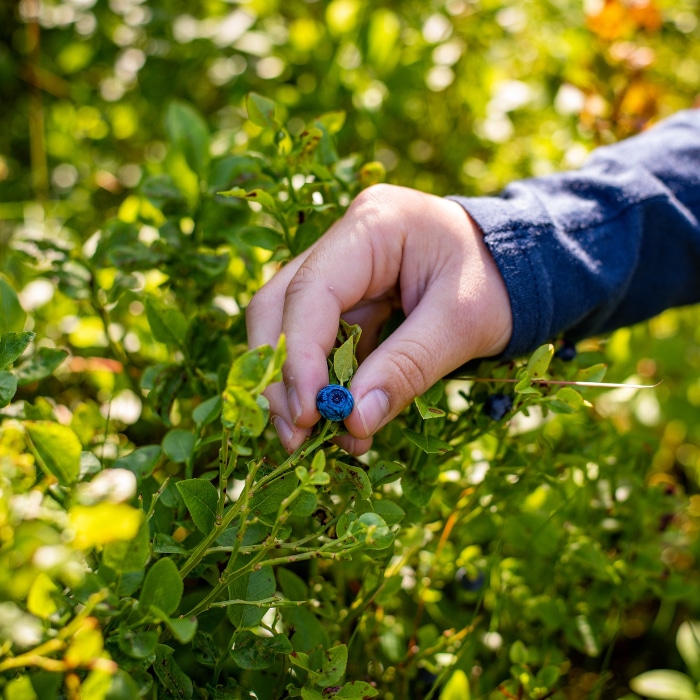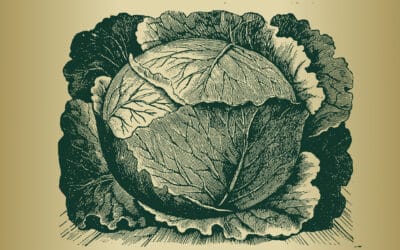TL;DR
- We delve into the important role of calcium in garden health, highlighting its importance in strengthening plant cell walls and improving soil structure for better water retention and erosion prevention.
- We identify the signs of calcium deficiency in plants, such as improper leaf formation and blossom end rot in tomatoes, emphasizing early recognition for effective treatment.
- We explore store-bought calcium solutions like calcium nitrate and gypsum, tailored to the garden’s pH balance and specific calcium needs for immediate remediation.
- We highlight sustainable, homemade calcium amendments from kitchen scraps like eggshells, bone meal, and wood ash, promoting an eco-friendly approach to garden care.
- We discuss optimizing calcium absorption through soil pH management and consistent watering, underlining the importance of regular soil testing and observation for maintaining plant health.
Understanding Plant Calcium’s Role in Your Garden

A hand gently picks a blueberry from a bush, highlighting the importance of plant calcium in producing healthy, fruitful plants.
Identifying Calcium Deficiency in Plants
Working along the path to a flourishing garden needs a keen eye for the subtle and sometimes open signs of plant calcium deficiency. This condition exists through a variety of symptoms that signal an urgent need for intervention. The first signs might include the emergence of newer leaves that seem unable to achieve their full shape and structure, appearing twisted or irregular.
This deformity is a direct consequence of the plant’s inability to access sufficient plant calcium, important for cellular development. Moreover, a more distressing symptom often observed is the occurrence of blossom end rot in fruits, particularly tomatoes, where the fruit’s end turns dark and decays.
This not only diminishes the aesthetic appeal of your garden but also impacts the yield and quality of your harvest. Early recognition and understanding of these symptoms are paramount in devising an effective response strategy, ensuring that your garden can recover and thrive.
Store-Bought Plant Calcium Solutions
In response to the urgent needs dictated by plant calcium deficiency, the market offers a variety of store-bought solutions designed to address and rectify this imbalance swiftly. Among the arsenal of options, calcium nitrate stands out for its dual role in providing readily available calcium and nitrogen, offering a quick fix to nutrient-starved plants.
Gypsum, or calcium sulfate, presents another viable solution, particularly valued for its ability to deliver plant calcium without altering the soil’s pH—making it an excellent choice for gardens already at their optimal acidity level. These products, each tailored for specific garden scenarios, offer gardeners the flexibility to select an amendment that aligns with their garden’s unique pH balance and calcium requirements.
Embarking on this route requires a careful assessment of the garden’s current state, ensuring that the chosen plant calcium supplement not only addresses the deficiency but also supports the overarching health and equilibrium of the garden ecosystem.
A product we currently love is Ground egg shells (Calcium).

A spread of calcium sulfate, also known as gypsum, is presented as a fine, white powder, essential for providing plant calcium and improving soil structure.
Homemade Calcium Amendments
Exploring the realm of sustainable gardening introduces us to innovative, homemade solutions that harness the power of everyday items to correct plant calcium deficiencies. Imagine turning the simple act of breakfast into a dual-purpose activity where the eggshells, often discarded, become a treasure trove of calcium for your garden.
These eggshells, when cleaned, dried, and crushed into a fine powder, become a slow-releasing calcium source that gradually enriches the soil. This process not only recycles kitchen waste but also introduces a necessary nutrient into the garden, supporting a balanced blend of sustainability and plant health.
Similarly, bone meal, a byproduct of animal bones (and a great high phosphorus fertilizer), and wood ash from burnt logs, offer an organic, nutrient-rich amendment to the soil. Incorporating these materials into your garden soil not only boosts the calcium content but also improves soil texture and fertility, creating a lush, vibrant garden ecosystem.

A cracked eggshell rests on the ground, symbolizing a natural source of plant calcium for soil enrichment.
Optimizing Calcium Absorption in Plants
Achieving maximum calcium absorption in plants is similar to creating a delicate balance within the soil’s ecosystem. The key lies in managing soil pH levels and establishing consistent watering practices. Soil pH significantly influences nutrient availability, with calcium absorption being optimal in slightly acidic to neutral pH ranges.
Adjusting the soil pH to this sweet spot ensures that calcium, whether added through homemade amendments or present naturally, is readily available to plants. Also, consistent watering practices play an important role in nutrient uptake. Calcium is given to plants primarily through water, and irregular watering can lead to uneven calcium distribution, especially affecting fruits and leading to conditions like blossom end rot.
Thus, maintaining a steady watering schedule ensures that plants can efficiently absorb calcium and other nutrients from the soil, promoting healthy growth and development. Together, these practices form a comprehensive approach to maximizing plant health through enhanced calcium absorption, leading to a thriving, resilient garden.
Monitoring and Maintaining Calcium Levels
Gardening is an ongoing conversation with the earth, a relationship that flourishes with attention and care. Regular soil testing and observation allow us to respond to our garden’s changing needs, ensuring that our plants remain vibrant and healthy.
As gardeners, we are protectors of the earth, nurturing not just plants but the soil that sustains them. Choosing the right calcium source for your garden, whether from the store or your own kitchen, is a step toward a more sustainable and thriving garden ecosystem. I invite you to embark on this path of discovery and enrichment, fostering a space where nature’s bounty can flourish in abundance.
In embracing both store-bought and homemade solutions for calcium supplementation, we create a stronger, more resilient system of life in our gardens. Let’s nurture our green spaces with the wisdom of science and the heart of sustainability, ensuring that every plant has the foundation it needs to grow and thrive.







